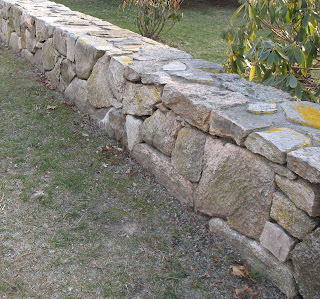Rank the walls below in terms of their maintainability in the year 2108.
1.

2.
3.
4.
Answers:
4,1,2 & 3
#4 has a large cement core with rocks cemented in place. It was made with rock shipped in.
#1 has indigenous rock from an old farmer's fence cemented in place.
#2 and #3 have indigenous rock piled and no cement.
Cement requires very large amounts of energy and the processes send very large amounts of GHGs into the atmosphere.
2&3, 1, 4
When a rock falls down from #2 or #3, someone needs to notice and replace it.
When weathering and frost breaks a cement connection on #1, it the rest of the wall tends to stay in place, and the broken part needs to be cemented back in place. The cement can be for the most part broken free from the stones as preparation for doing the job.
When weathering and frost breaks up the cement core to some degree, as it will within 100 years, it needs to be cemented back in place. If the weathering and breakup become significant enough, then the cement core must be removed and disposed of. When the cement holding the stones in place fails, the stones will fall completely to the ground, exposing the inside of the wall to further weathering. The cement can again be for the most part broken free from the stones as preparation for doing repairs.




No comments:
Post a Comment